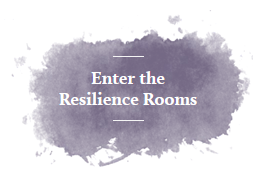This is Part 2 of a series. Read Part 1 here.
The abundance of reads on my most recent Psychology Today article (Part 1, above) was to me a real indication of a growing issue that has become pervasive across the country. My colleagues and I are collectively seeing a substantial rise in anxiety disorders and anxiety-related symptoms within our respective practices; this rise has seemed to appear across all populations irrespective of location, socio-economic status, race, religion, etc.
The Span of Anxiety
To many, it’s not surprising that the prevalence of anxiety is growing due to our evolving cultural and societal concerns. With looming worry about our health due to COVID and monkeypox, among other illnesses, the increasing rates of mass shootings and crime, the current political and financial climate, and changes to some populations’ constitutional rights, many of us feel vulnerable and fearful and find ourselves ruminating on anxious thoughts about the future.
Anxiety disorders develop from a complex set of risk factors including our genetics, brain chemistry, personality, and life events. According to the National Institute of Mental Health and the Anxiety and Depression Association of America, anxiety disorders affect 40 million adults each year, which is 19.1 percent of the population 18 and older. Perhaps even more alarming is the 31.9 percent of adolescents between the ages of 13 and 18 who are affected as well. Untreated teens are at risk for poor academic performance, decreased social success, and a higher probability of engaging in substance use.
Living with Uncertainty
We have limited control over our lives and the things that happen societally. The resulting uncertainty can often lead to destabilizing thoughts and feelings that create helplessness and hopelessness. We can question the world around us and become disappointed and frustrated with ourselves, all while desperately searching for ways to stabilize within a chaotic environment.
The ways in which we communicate with ourselves have a substantial impact on our mindset, motivation, and actions, thereby affecting our ability to feel empowered and ease our anxiety amidst uncertainty. The way we express ourselves and our ability to reframe and shift can also have a positive impact on our mindset and perception. It can be the deciding factor as to whether we take direct action or default to resisting, avoiding, disregarding, or distracting from living our lives.
Consider Saying These Sentiments to Yourself When Feeling Anxious:
- “This is the way my mind loves and tries to protect me.”
Here you acknowledge that your mind (and body) truly looks out for and loves you. It is doing what it thinks is best to try and protect you from danger, harm, and discomfort. But it doesn’t always know how to decipher what’s dangerous and harmful, is sometimes relentless at getting its point across, and isn’t always cognizant of the benefits of experiencing discomfort like building resilience and developing and fortifying coping skills. It has good intentions, in other words, but doesn’t always have the best delivery. Underneath it all, it can help to remind yourself that your mind is coming from a loving, caring, and nurturing place.
- “Plot twist!”
Things can and do spontaneously happen differently than you want or expect them to, and it causes you to immediately change gears and recalibrate. It can understandably leave you feeling disappointed and unsettled. When you resist the change, it increases the distress and could often leave you feeling more exasperated because you’re frustrated at yourself and additionally at the situation.
In order to let go of the resistance and become more flexible and open to the change, the phrase “plot twist” can help remind you that it’s a pivoting or veering off, and that you can work with, rather than against.
- “I’m losing my mind.”
When we typically say this, it connotes that we’re spiraling out of control or can’t handle much of anything. But here, you’re purposefully and intentionally deciding to lose your mind. You’re reminding yourself that you can’t believe everything you think because your thoughts can often be irrational, unpredictable, and catastrophizing. You’re choosing to act and react from your values and who you want to be, rather than from the thoughts and feelings that can sometimes lead you awry.
- “Letting go is bringing me closer to freedom.”
The idea of letting go can sometimes induce fear because of the lack of control or uncertainty. Here, however, you’re reframing it as leading to personal freedom.
“Letting go” includes letting go of the narratives we tell ourselves, such as how we see ourselves, others, and the world. When you have the idea that something is “bad,” “wrong,” or “unwelcome,” you’re compelled to drive it away, wish for something different, and have preconceived thoughts and feelings. These rigid and circumscribed ways of thinking and behaving keep you bound and can keep you from moving toward progress and transformation.
- “I matter.”
This brings you closer to recognizing that your values and what’s truly important to you matter and that you’re more than your anxious thoughts and feelings; you have them but you aren’t defined or confined by them. It’s going from identifying yourself as “I’m anxious” (I am my anxiety) to “I have anxious thoughts and feelings” (I am more than my anxiety).
- “I’m choosing to grow.”
You’ll increase your awareness and conscientiousness toward consistently putting in the effort to enhance your self-confidence, self-belief, self-love, self-confidence, and self-efficacy. Taking a vow toward growth, which you’re choosing to invest in, can be both empowering and personally satisfying. You get to decide how you will commit to this process and what actions need to be taken to successfully accomplish this.
- “Failure is feedback.”
We don’t always get it right—we can’t, in fact, because we’re imperfect human beings. It is often through our trials and tribulations, mistakes, and life experience that we learn our greatest life lessons. It’s the mechanism in place to ensure our growth and maturity—if we allow it to.
Yet we can sometimes get stunted by our fear of failure because of the discomfort it may evoke. We may become so afraid that we don’t even give ourselves the chance to prove otherwise. Seeing failure as feedback will allow you to recognize the intrinsic benefits of “failure” so that you observe, notice, and take that feedback with you through your journeys so you directly learn from them, rather than relying on familiar and comfortable ways of being and acting.
- “There’s always a tradeoff.”
Everything comes at a cost. We often must give up something to get something or be willing to accept discomfort to move through a change. It’s a natural phenomenon in our lives. Whether you want to venture or embark on something new or may be going through a major or minor life transition, you may need to accept tradeoffs. Expecting, accepting, and expanding your willingness to adapt to tradeoffs will make it more likely that you’ll forge ahead no matter what comes your way.
Feeling anxious is natural and expected, especially with all the stress and uncertainty we’re surrounded by. You have a choice on how you communicate to yourself and how you choose to behave on behalf of your thoughts and feelings. Be proactive and make concerted efforts to reframe, refocus and redirect the messages in ways that empower you to live your life with greater peace and self-satisfaction.
Here is a Muscle Relaxation Guided Meditation led by me.
Please subscribe to my YouTube channel for more interviews and guided meditations.
Blog as published in Psychology Today.



